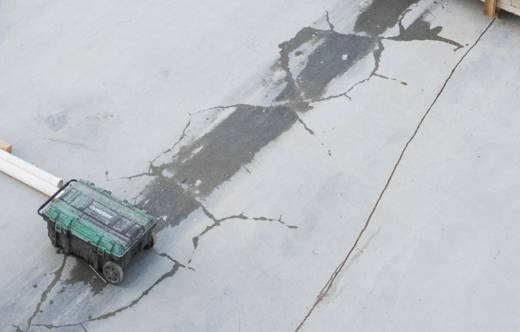The California Department of Water Resources has released a technical memorandum laying out its detailed explanation for widespread cracking that has appeared in concrete placed this year during the Oroville Dam spillway rebuilding project.
The report, embedded below, recounts measures taken to prevent cracking in the massive slabs intended to serve as the final, finished concrete surface in two large sections of the spillway. The document was compiled after an Oct. 2 Federal Energy Regulatory Commission letter asked DWR to explain the cracks and document their extent.
The primary factor in the cracking, the report suggests, is due to "the highly restrained nature" of the spillway's concrete slab panels, which are anchored to subsurface rock.
Some of the cracking occurred, the memorandum says, because the contractor on the massive project was slow to begin "water cure" of the newly placed concrete or the water cure process was disrupted. "Water cure" is a process in which newly installed concrete is kept moist -- for instance, by laying wet fabric on a just-finished surface -- to prevent rapid evaporation and allow the concrete to mature fully.
The memo gives a rough idea of the extent of the cracking based on preliminary mapping and evaluation of the spillway's roughly 228 or so newly installed concrete slabs.

